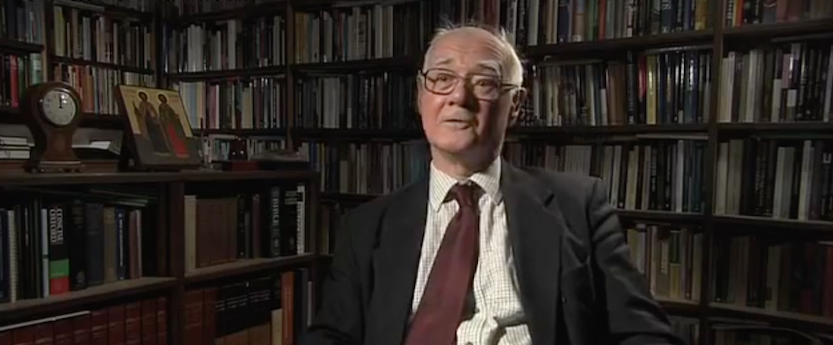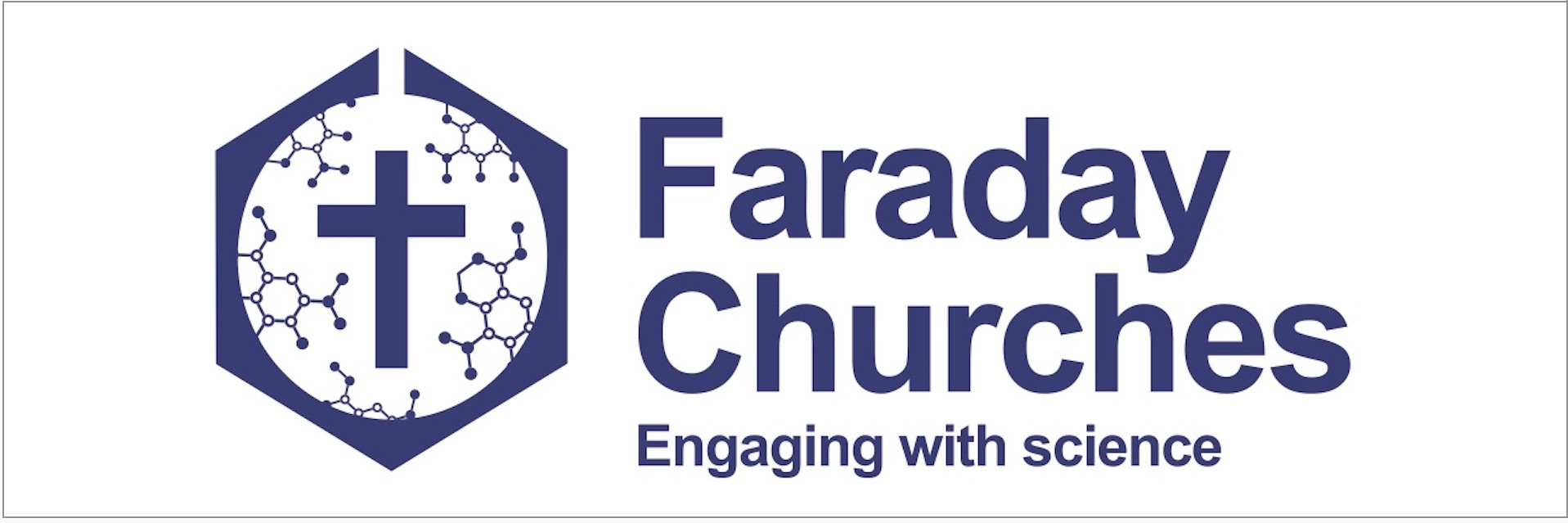
© The Faraday Institute for Science and Religion
John Polkinghorne (Revd Canon Dr, KBE FRS) was one of the grandfathers of the science and religion world in the UK. He grew up attending his local parish church, choosing to be confirmed and keeping up his communicant life through school and national service. He made a further commitment to Christian faith as a fresher at Cambridge University and became a member of the Cambridge Inter-Collegiate Christian Union (CICCU), later marrying fellow maths student and CICCU member Ruth Martin. His other great love was mathematics and he graduated top of his class, continuing on to do a PhD with the Nobel Prize-winning physicist Abdus Salam. After some years in the US and Scotland, he became Professor of Mathematical Physics at Cambridge University.
John saw his work in science as a Christian vocation, and felt a responsibility to use his talents in that area. But in 1979, at the age of forty-eight, he decided he’d done his bit for physics and that it was time for a different sort of adventure. Resigning his academic position, he trained for ordination in the Church of England. In an interview for my 2009 book ‘Test of FAITH: Spiritual journeys with scientists’ he said:
“It’s one thing to go to church on Sundays but to give up a professorship and train for something else – that was a bit more than a gesture. It’s a slightly odd thing to do. I think a lot of people realised I was a religious person but they didn’t expect me to take it quite that seriously…People were saying to me, ‘Oh John what are you up to?’ They mostly weren’t thinking so much about my becoming a clergyman but just the fact that I was a Christian. We would have a conversation over a cup of coffee in some laboratory canteen and I would try to explain why I had a Christian belief. Of course I couldn’t say all that much in such a short time and in my mind there formed the idea of what I would have said if I’d had a few hours in which to say it.”
These thoughts turned into the first of many books, and John found himself thoroughly engaged in the conversation about science and religion for the rest of his life. One of his main messages was that “they are not as much chalk and cheese as people think…I’m not a vegetarian butcher. There is a cousinly relationship between thinking about theology and thinking about science.”
After five years as a curate John returned to Cambridge as a college chaplain, and then President of Queens’ College. He kept up his priestly ministry in the academic world, playing a large role in chapel life as well as becoming involved in ethical discussions at a national level. John was very generous with his time, giving interviews, reviewing books, and replying to correspondence by post – he made a deliberate decision not to use email. His book-lined study provided the backdrop for a number of filmed interviews, including the three-part series Test of FAITH: Does science threaten belief in God? He was a typical self-deprecating Englishman, and described his role in science and religion in this way:
“I’m basically a scientist with a strong interest in theology. You can’t become a real professional in two spheres or at least most of us can’t, so I’m conscious of not being a professional theologian in the sense of having had that long apprenticeship and training. I like to describe myself as theologically being a ‘bottom-up thinker’. The interesting thing for a scientist, I think, is to ask, ‘what are the phenomena, what are we trying to understand?’ We don’t know beforehand how we should think about them, so we will allow experience and circumstances to shape the way we think about them. This is ‘bottom-up thinking’, moving from experience to understanding, and that’s how I approach theology as well…
The Christian worldview is a fantastically profound and deeply explanatory understanding of the world…So many people have this picture that science is fact and religion is opinion; that there are reasons for scientific belief but religious belief is just shutting your eyes and gritting your teeth and believing impossible things because some infallible source of authority tells you that. So I’m always trying to say, ‘Look, you may or may not think my motivations for my Christian beliefs are adequate but they are at least there. They’re something to think about. It isn’t just a question of blind faith.’”
John chose Colossians 1:15–20 to appear at the end of his interview:
He is the image of the invisible God, the first-born over all creation. For by him all things were created: things in heaven and on earth, visible and invisible, whether thrones or powers or rulers or authorities; all things were created by him and for him. he is before all things, and in him all things hold together. And he is the head of the body, the church; he is the beginning and the first-born from among the dead, so that in everything he might have the supremacy. For God was pleased to have all his fullness dwell in him, and through him to reconcile to himself all things, whether things on earth or things in heaven, by making peace through his blood, shed on the cross.
He wrote, “I value this passage because it speaks of the cosmic significance of Christ, the One in whom all things hold together and who redeems all things (notice, not just all people) by the blood of his cross. Here met my deepest religious beliefs and my strongest scientific concerns.”
I am one of the many people who wish to express their gratitude for the life of John Polkinghorne. He explained his beliefs and convictions about the world in a way that helped many others to get past the barriers that are sometimes put in the way of scientifically minded people who are drawn to spiritual things. He has been an example to countless scientists who share similar convictions, and I’m sure his words will continue to inspire us to share the way our Christian faith and science interact in a satisfying and life-giving way.
Resources
Test of FAITH: book, film, interview clips, and more.
God in the Lab: podcast with John Polkinghorne.
Short article covering some of John Polkinghorne’s thinking
Preview of his most introductory book, Quarks, Chaos and Christianity.
Interview clips from the Closer to Truth series.




